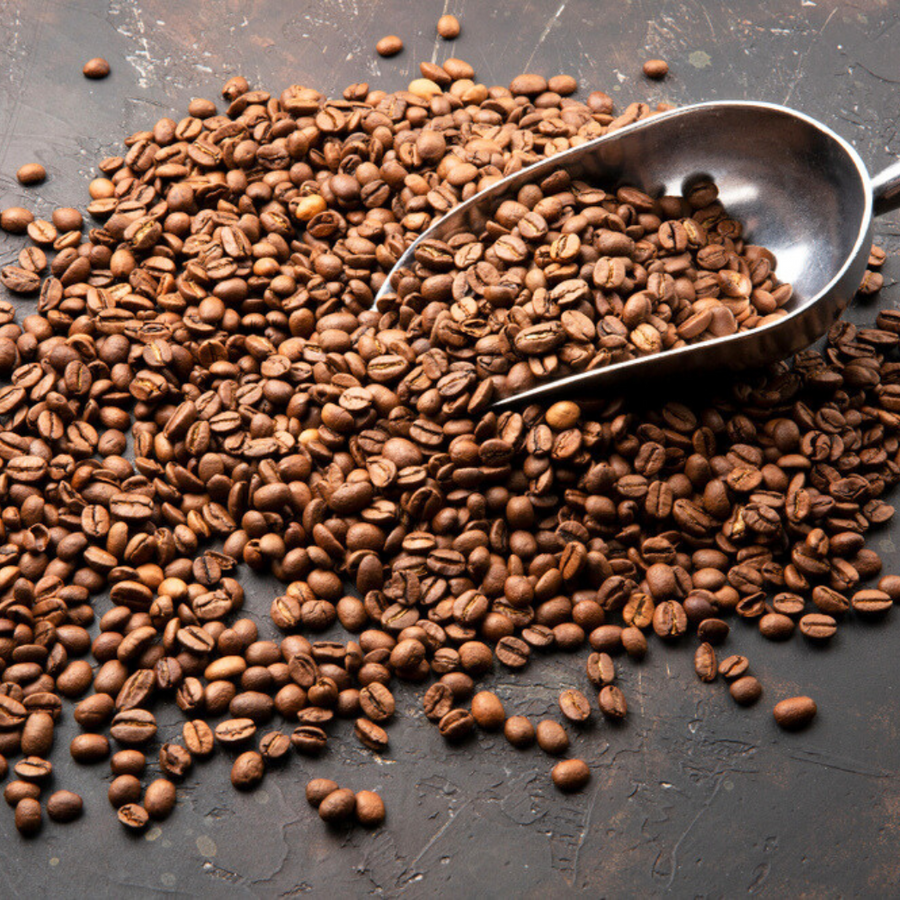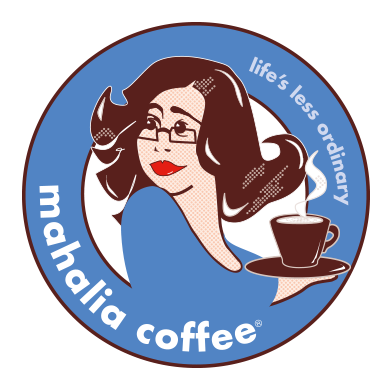
How Mahalia roasts her Award Winning Coffee
Below is an overview of how we consistently roast beautifully tasting coffee, day in, day out, every season at Mahalia Coffee.
Roasting stages
There are three main stages in roasting: drying stage, browning stage and development stage.
1. Drying Stage
The coffee bean has a moisture content of 10 - 11.4%. We need to rapidly reduce the moisture content in the bean. The drying stage typically lasts 3 - 8 minutes with a traditional drum roaster, depending on how many kilos you start with, the larger the batch, the longer the time extends. The temperature at the end of drying stage is typically 160 ⁰C. Especially with drum roasters, you need to be careful so that you do not burn the beans by having too much heat at the beginning of the roasting process. The drying stage is also important for collecting energy for the bean because the last stage of roasting is exothermic (heat producing).
2. Browning Stage
From 160 ⁰C the coffee starts to smell like baking bread, a sweet vanilla cake in the middle stage of cooking. This is when the aroma precursors are starting to convert to aroma compounds. Even though browning stage is after drying stage, some drying continues throughout this stage in the roasting process.
At the end of the browning stage, a term called the Maillard reaction is starting. It is responsible for browning. The Maillard reaction is responsible for reducing sugars and amino acids react making hundreds of different aromas and colour compounds known as melanonids. This is the stage when the roast naturally slows down – and roast masters also want to slow the rate of rise during this stage – to ensure optimum flavour development. In the end of browning stage, the coffee will start to pop. This is called the first crack and the development stage starts.
3. Development Stage
In the beginning of development stage, the reaction becomes exothermic and the coffee cracks. During drying and browning stages, the bean has collected energy that makes the coffee explode. Development time is when the wanted aroma compounds are developing. If we do not slow down the roast at development stage, we easily get coffee that has a smoky taste, and the flavour is too sharp from applying too much heat from the burners of the roaster.
The length of development stage is typically 15 – 20% of the total roast time depending on the desired flavour profile and roast degree.
Roast degree
Roast degree is one of the most important indicators with the roast. It can be measured by time, temperature, a colour meter and by cupping. Roasters usually want to enhance coffee’s own flavours and decide the roast degree. Typically, light roasted coffee is more acidic, and dark roasted coffee is more dark cocoa. Also, fruity flavours are more common in light roasts, and roasty, flat, dull flavours are more common in over roasted dark roast coffee. Light roasted coffee is fruitier due to high amounts of an organic compound, 5-hydroxymethylfurfural. When roasting goes further, this compound breaks down to less fruity compounds. The number of sulfuric compounds increases, which can produce roasty and smoky tobacco flavours when the coffee is allowed to roast for too long. Lighter roasted coffees bring out more of the character of the coffee origin. It is easier to distinguish a lighter roasted coffees true flavour profile from each other than dark roasted coffees.
Roast time
Even though roast temperature has the larger role on coffee flavour profile, total roast time and time of each stage are also as equally important factors. If you roast in a shorter period of time, you will get more desired aroma compounds. However, be careful not to burn the outside of the beans, and in turn contribute to major underdevelopment in the center of the bean. Coffee’s total flavour (fruity, berry-like, chocolatey, nutty al togetherness) is stronger from a well thought out and executed roast plan.
Roasting for filter or espresso?
Have you ever thought what is the difference between filter and espresso coffee? Filter extraction is done by gravity, and its process is quite gentle. You may use very aromatic and more acidic coffee for filter. On the other side of brewing you have espresso, this is extracted with generally 9 bar pressure. That means more flavour is extracted to the cup through pressurised water. Sometimes coffee roasted for espresso might not be as good when brewed as filter coffee and vice versa. Depending on the bean, and not for the extraction method, I aim for a golden middle way between too light and too dark so that coffee is suitable for both.
Traditionally espresso was a darker roast with low acidity and big body. Filter coffee is roasted differently but roast degree is typically lighter than for espresso. Nowadays roast styles are more flexible than the older traditional styles with the knowledge base within the specialty industry growing exponentially.
All in all, learning to roast is a never-ending journey. You can always learn more about the bean. The most interesting part of my work is trying to find out the best possible roast profile to bring out the all the coffees best flavour characteristics.
